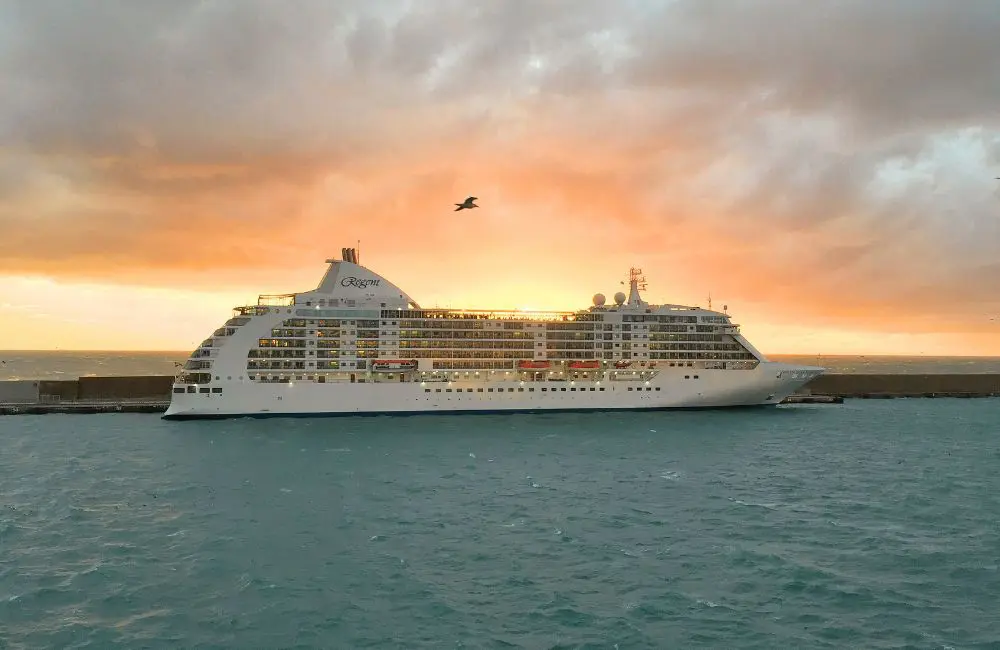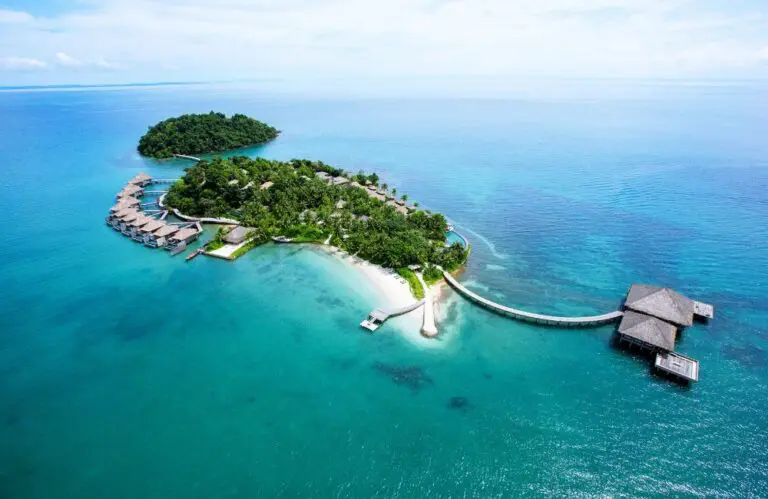When you’re new to selling cruise, you’ll discover there’s a whole new language to learn – and lingo is king. Here’s a primer to keep you afloat.
Regent Seven Seas Cruises’ Vice President Sales & General Manager, Asia Pacific, Lisa Pile, says when she moved from the luxury hotel industry to her new role, her biggest challenge was learning the lingo.
“Very early on in my employment, Steve Odell – who was then SVP and Managing Director of Asia Pacific across the three brands (NCL, Oceania and RSSC) – asked me to attend a meeting with regards to the ‘shakedown cruise’ for our new Seven Seas Explorer.
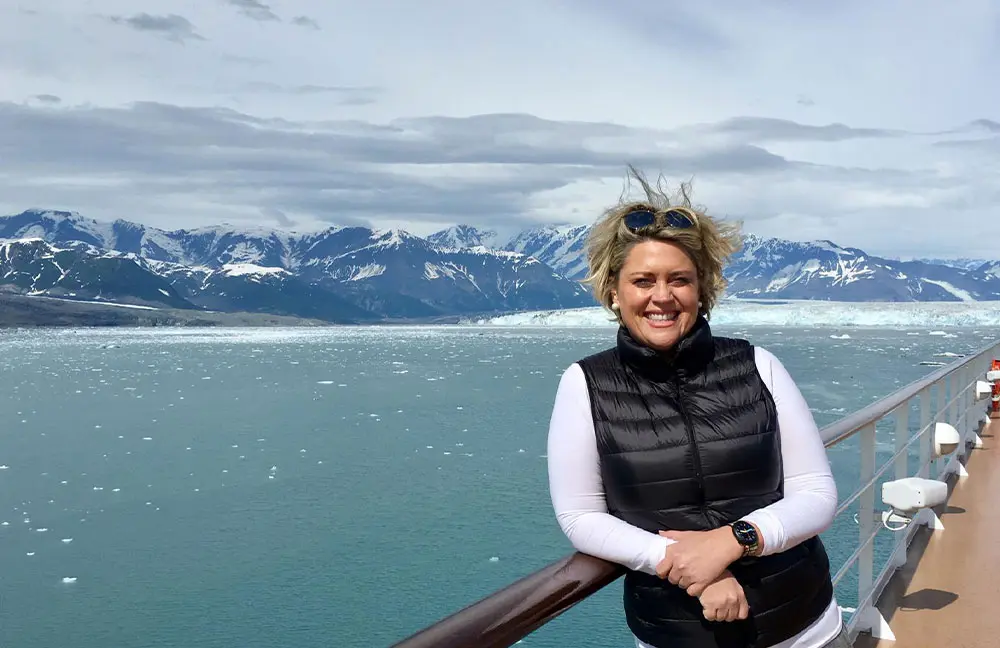
“Wide-eyed and with ears open, I was asked if I agreed with the approach, so I said yes. Once everyone had left the room, I asked Steve, ‘What is a shakedown cruise?’ He laughed and said, ‘Don’t worry Lisa – it’s exactly the same as a new hotel opening!’”
In cruise ‘lingo’, the shakedown cruise is when a new ship makes a short voyage with its crew – and often crew from other ships in its fleet – along with selected clients onboard, to check that hotel operations are up to scratch before paying guests embark for the inaugural or maiden cruise.
Now we’ve got that one sorted, let’s talk common acronyms and terms you need to know when you’re selling cruise.
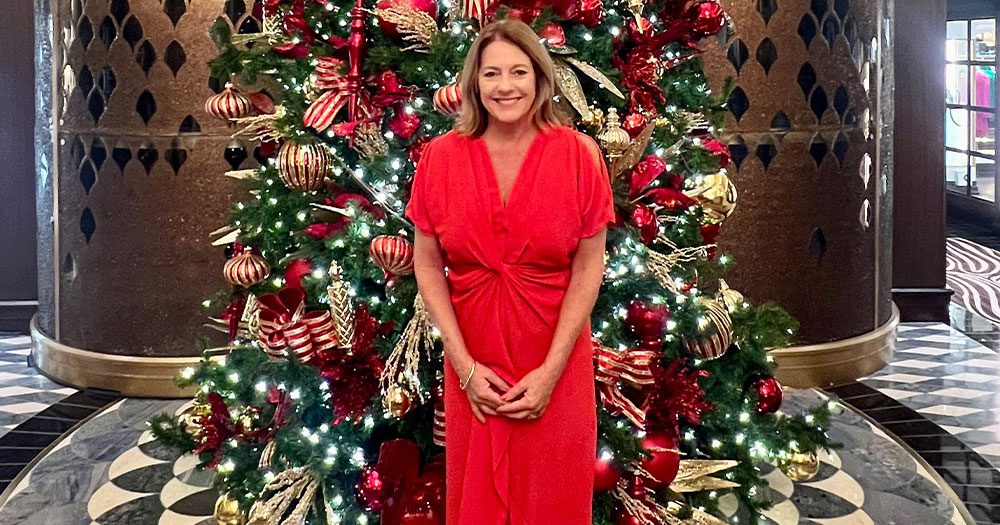
Decoding cruise lingo
Here is some of the cruise lingo compiled with the help of luxury cruise specialist, LUXE by itravel’s Megan Catterall.
- BK – when a booking is confirmed
- CX – when a booking is cancelled
- CLIA – Cruise Lines International Association (our branch is Australasia)
- FCC – future cruise credit
- FCD – future cruise deposit
- FIT – fully independent traveller
- FOSH – fly out sail home
- GTY – guaranteed stateroom
- NCF – non-commissionable fares
- OBC – onboard credit
- OPT – Overseas Passenger Terminal
- Pax – passenger
- PPG – prepaid gratuities
- PTM – Personal Travel Manager, member of TravelManagers Australia group
- ‘Wave season’ gets its own paragraph here. In Australia, it means the period when overseas ships sail in local waters, aka the summer, from late September/early October until April. In the US, wave season runs from January to March and is when cruise lines offer special deals on new itineraries and many travellers book cruises.
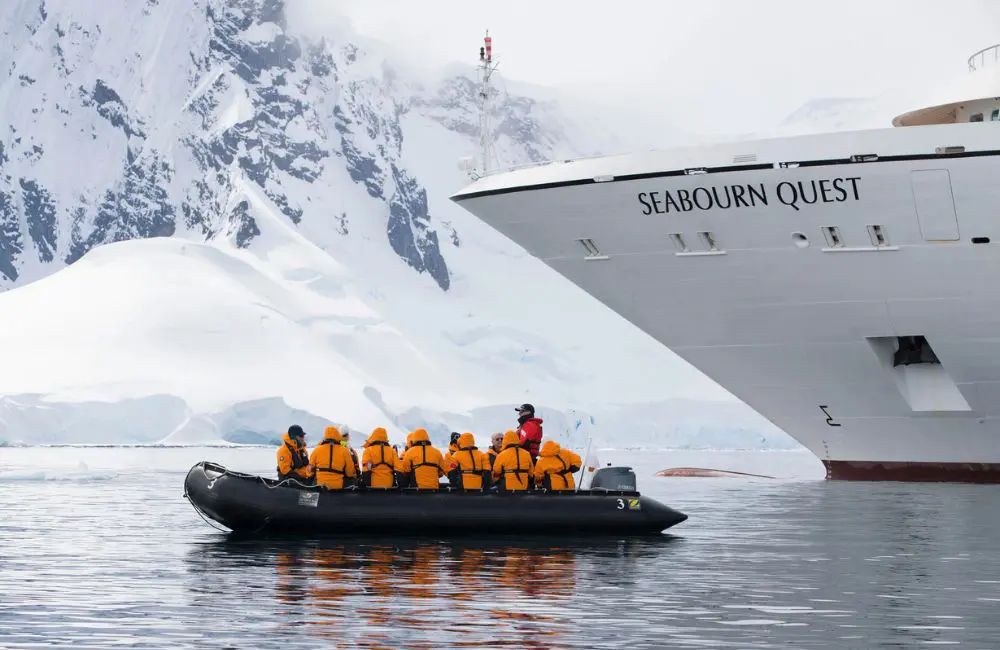
Ports, cruises and pax
- Cruise line: a company that operates one or more cruise ships. For example, Princess Cruises and Seabourn Cruises are cruise lines. To complicate matters, the three biggest cruise companies – Carnival Corporation, Royal Caribbean Cruises and Norwegian Cruise Line Holdings – each operate several individual cruise lines. Both Princess and Seabourn come under the Carnival Corporation umbrella.
- Cruise liner: Cunard’s Queen Mary 2 is considered the only true passenger ocean liner sailing today. The word ‘liner’ is often used for any old ship, but experts don’t like it! Similarly, ships should never be called ‘boats’.
- Dock or tender ports: Dock means that the ship will pull up to the port’s pier and passengers use the gangway to get on and off the ship. A tender port means that the ship will anchor in the harbour near the port. Passengers are ferried between the ship and port on a boat, aka a tender.
- Dry dock: A dock in a shipyard where ships are taken out of the water so the hull and engines can be cleaned and serviced. Ships are often upgraded with new décor and amenities while in dry dock.
- Home port, also called turnaround port: The port where a ship starts and ends its cruises most of the time, either year-round or for a season. For example, Cunard’s Queen Elizabeth is home-porting in Sydney this summer, while Carnival’s ships Carnival Adventure and Carnival Splendor will home-port in Sydney year-round.
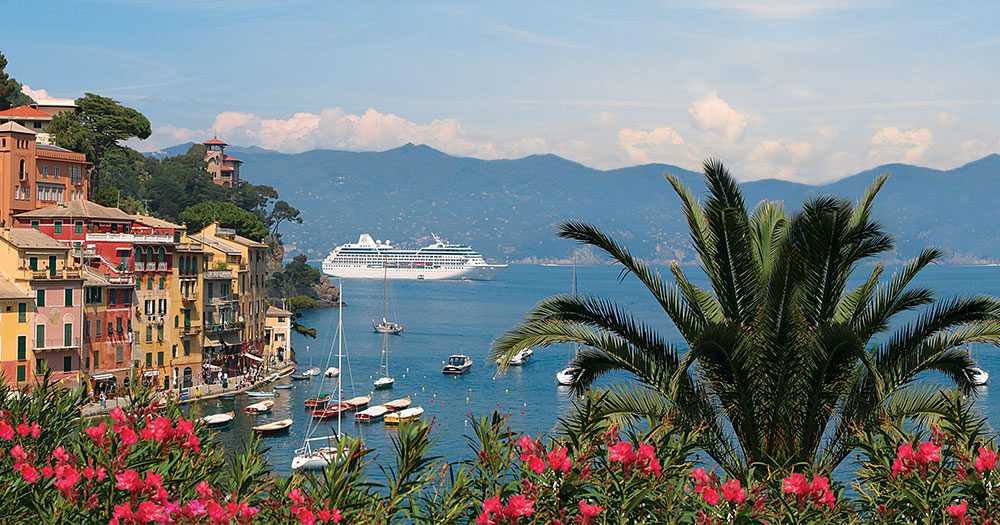
- Turnaround day: The busiest day for the crew of any cruise, when one cruise ends and another begins. Guests finishing their cruise usually disembark in the morning; guests for the next sailing embark in the afternoon.
- Repositioning cruise: A one-way itinerary when a ship travels from one region of the world to another — eg, from the Caribbean to the Mediterranean or Alaska to the South Pacific — when one cruise season ends and another begins.
- Transatlantic cruise: Generally, a repositioning cruise when a ship crosses the Atlantic, from Europe to the Caribbean (or vice versa). Queen Mary 2 is the only ship that operates regular transatlantic crossings between Southampton and New York.
- Open jaw: A one-way cruise that finishes at a different port from the start port.

- World cruise: Although world cruises don’t literally circumnavigate the globe, they sail to dozens of destinations over anything from 90 to 120 or more days. A world cruise is often divided into several sectors, or segments, so guests can join for an ‘open-jaw’ itinerary.
- Grand voyage: Cruises that sail in specific regions such as Africa, South America, the South Pacific and Asia, for lengthy periods but not for as long as world cruises.
- Sea day: When a ship spends all day and/or night at sea, without visiting a port.
- Shorex: Jargon for “shore excursion”. Guests can book shore excursions through the cruise line or independently.
- Passenger capacity: Most cruise lines quote the passenger capacity of a ship as double occupancy – the total number of staterooms multiplied by two (two people sharing a stateroom). Maximum capacity refers to the total number of passengers that can be accommodated, taking into consideration staterooms with sofa beds and bunk beds.
- Passenger to crew ratio: This indicates the number of crew members available to serve each passenger. The higher the ratio, the better service you can expect – 1:1, ie, one crew member for one guest, is as good as it gets. As you’d expect, luxury ships have a higher passenger to crew ratio than mainstream ships.
- Passenger to space ratio: Size isn’t everything – it’s about how much personal space there is for each passenger on a cruise ship. There seem to be several ways to calculate PSR, involving either gross tonnage or gross registered tonnage (a measure of a ship’s volume or enclosed spaces, not how much it weighs). You divide the tonnage by the passenger capacity and in a nutshell, the higher the resulting number, the more public space there is per passenger. One of the highest is Silversea’s ultra-luxe Silver Nova, at 75; Carnival Cruise Line’s ships usually score in the 30s. However, it’s a complex ratio and doesn’t take into account factors such as passenger flow and overall design.
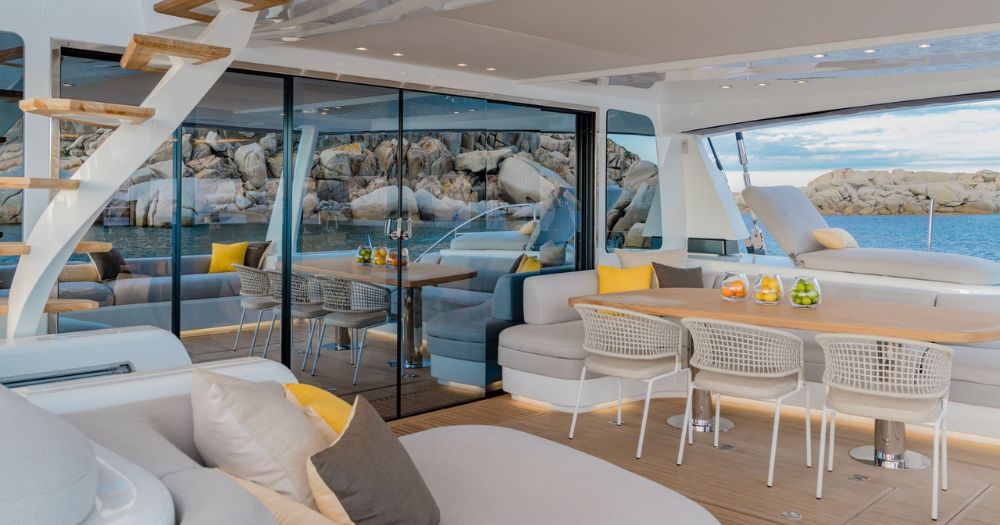
Lingo around the ship
- Aft: At, near or towards the back of a ship. The opposite of aft is forward.
- Beam: The width of a ship at its widest point
- Berth: In a port, the spot where the ship is docked; on the ship, a word for bed.
- Bow: The front or forward part of a ship. The opposite (back end) is the stern.
- Bridge: The ship’s navigational command centre.
- Knot: A knot is 1 nautical mile (1.852 kilometres). A ship’s speed is measured in knots, so 20 knots is 37km/h.
- MDR: Main dining room, where meals served are included in the fare. Many newer ships offer several different restaurants rather than one MDR.
- Muster drill: A mandatory safety exercise to familiarise all guests and crew with the location (muster station) where they assemble in the unlikely event of an emergency.
- Muster station: A specific location on the ship where passengers gather in case of emergency. All guests are allocated to one of several stations around the ship.
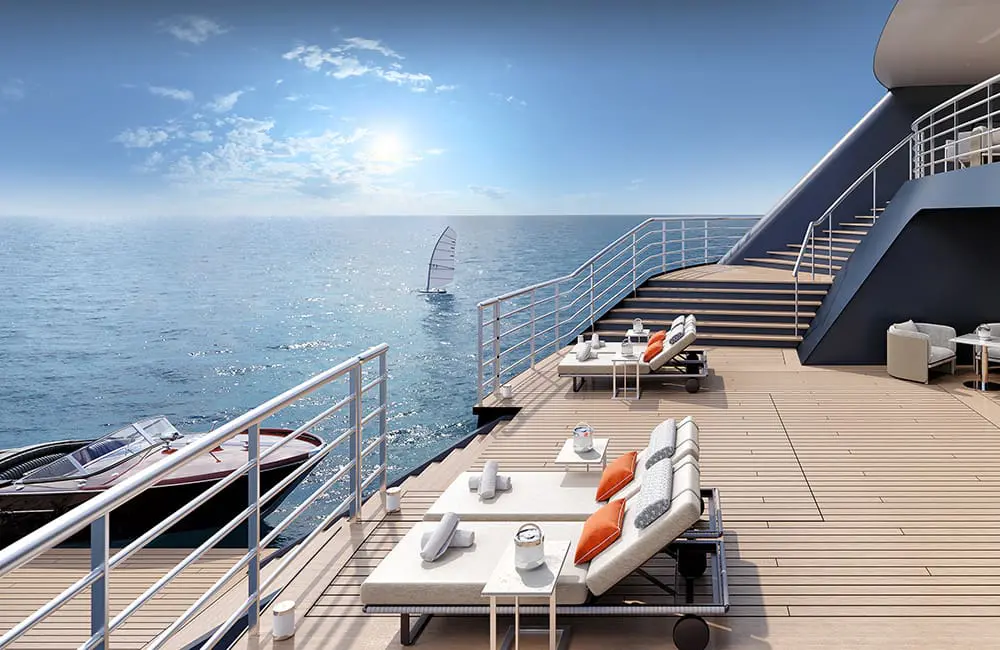
- Port: left. The ship can turn to port; the port side is the ship’s left side.
- Starboard: right. See above …
- Promenade: an open deck that runs around the ship’s perimeter, used for walking and running.
- Stateroom: Today’s preferred word for cabin.
- Suite: In luxury cruise terms, a suite should have separate sleeping and living areas.
- Outside cabin: Stateroom with a porthole, window or balcony that overlooks the ocean.
- Oceanview cabin: Stateroom with a porthole or window.
- Inside cabin: Stateroom with no porthole, window or balcony.
Owner’s suite: The best suite category on the ship. - Virtual balcony: Introduced by Royal Caribbean for inside cabins, a virtual balcony is a floor-to-ceiling high-definition TV screen showing live views from outside the ship.



